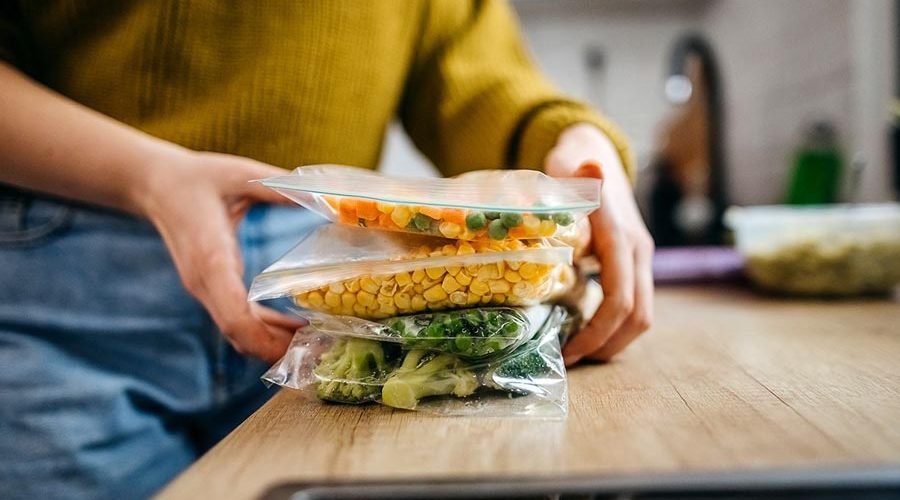Meal planning can be a daunting task, especially for beginners who have never done it before. But when you have the right tricks, tips, tools, and utensils, it doesn’t seem so tiring and becomes something that you really enjoy.
Here are some ways to get started with meal planning that will help to eat healthily, save money and time, and reduce food waste.
Table of Contents
1. Start Small and Be Realistic
Starting small and being realistic is an important aspect of meal planning, especially if you are new to the process. Meal planning can be overwhelming, so it’s essential to start with a plan that is realistic and manageable. If you try to plan for every meal of the week from scratch, you might find yourself feeling overwhelmed and discouraged, making it more likely that you will give up on meal planning altogether.
Instead, start with a small goal, such as planning dinners for a few days at a time. Once you feel comfortable with this, you can gradually add breakfast and lunch planning. By starting small, you can build your confidence and skills and make meal planning a regular habit.
It’s also important to be realistic about the number of meals you can plan given your schedule and commitments. If you have a busy week ahead, plan meals that can be prepped in advance or take less time to cook. Also, don’t forget to factor in any social events or meals outside of the home, which can affect your meal planning.
Starting small and being realistic is not just about the planning process but also about the types of meals you plan. If you try to plan elaborate, time-consuming meals every day, you might quickly become overwhelmed and discouraged. Instead, plan simple, healthy meals that can be easily prepared, such as sheet pan dinners or slow cooker meals.
2. Make a List of Your Favorite Recipes
Making a list of your favorite recipes is an important step in meal planning. It can help you plan meals around the foods you know you love and that are easy to prepare. Having a list of favorite recipes can also help you choose new recipes that are similar to your favorites and add variety to your meal plan.
To make a list of your favorite recipes:
- Start by thinking about the meals you enjoy eating regularly. These could be meals you cook at home, meals you order at restaurants, or even recipes you have seen online or in cookbooks. Write down the names of these meals and the ingredients that are required to make them.
- Next, consider the ingredients you already have on hand in your pantry, fridge, and freezer. Look for recipes that use these ingredients, so you don’t have to purchase additional items. Also, think about the season and the availability of fresh produce. Seasonal ingredients are often more affordable and taste better.
- Try to plan meals that use similar ingredients, so you can minimize waste and save money. For example, if you plan to make a stir-fry one night, you can use any leftover vegetables in a soup or salad the next day.
- Finally, don’t be afraid to try new recipes and experiment with different ingredients. You can use your list of favorite recipes as a guide and try variations on those meals. This can help keep meal planning interesting and prevent you from getting bored with your meals.
3. Plan Your Meals Around Your Schedule
Consider your schedule when planning your meals. For example, if you know you will have a busy week ahead, plan meals that can be prepped in advance and require less cooking time. Also, consider leftovers and plan to use them for lunches or dinners later in the week.
4. Use a Meal Planning Template
Using a meal planning template can help you stay organized and make the process easier. You can find free templates online or create your own. Make sure to include space for breakfast, lunch, dinner, and snacks, and also a shopping list.
5. Shop With a List
Once you have planned your meals, make a shopping list and stick to it. This will help you avoid impulse purchases and save money. Also, consider shopping at farmer’s markets and buying seasonal produce to save even more money.
6. Invest in Quality Kitchenware
Investing in quality kitchenware, can make meal prep and cooking easier and more enjoyable. Here are some reasons why it’s important to use the right tools and utensils:
- Saves time: Using the right meal prep tools can help you prepare meals more quickly and efficiently. For example, using a sharp knife can help you chop vegetables and meat more quickly than using a dull one.
- Better results: The right tools can help you achieve better results in your cooking. For example, using a non-stick pan can help you cook food evenly without sticking to the pan.
- Consistency: Using the same tools and utensils each time you cook can help you achieve consistency in your cooking. This is especially important when baking, where precise measurements and techniques are crucial.
- Safety: Using the right tools and utensils can also help you stay safe in the kitchen. For example, using a heat-resistant spatula can help you avoid burns when cooking over high heat.
- Durability: Investing in high-quality tools and utensils can save you money in the long run. Durable tools and utensils can last for years, saving you the cost of replacing them frequently.
With these tips and tricks, you can become a meal-planning pro in no time!





